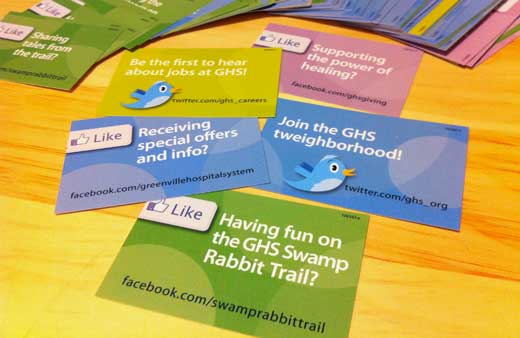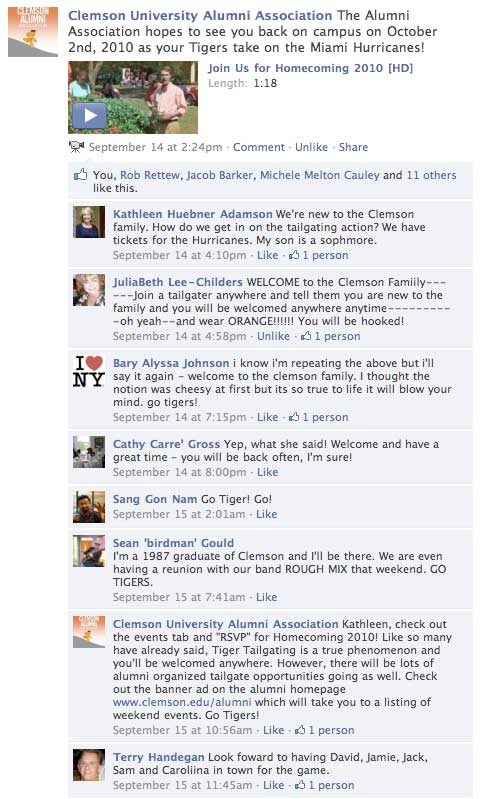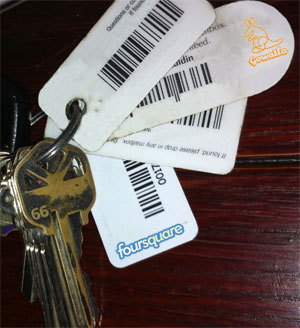As I sit here and drink my morning coffee…I am browsing through the healthcare column of my Twitter account. I have a healthcare list that follows many healthcare organizations, hospitals, doctors, healthcare marketing professionals, nurses, and any one talking healthcare and social media. One thing I have been noticing is how awkward it seems to me to watch tweets from healthcare groups using doctors names in a tweet for promotion or awareness. Well, weird that I cannot click the name to learn more.
Side Note:
If you look above, there is no link to read about Dr. March Seabrook or even an article to learn more about the award. It is not my intention to pick on Dr. March Seabrook or the hospital that posted this link. That is why I am not making it obvious the name of the hospital. I am sure Dr. Seabrook is a fine chap…so he deserves a link of some kind. So, here is where you can read more about the award…CLICK HERE.
What seems so weird about using just the name, well it is that I have no frame of reference to this person, no link, no Twitter account…just a random doctor with a name…in a sea of Tweets. If he walked past me down the road, I would have no idea who this person is and if they were even a doctor. Twitter is a good way to inform the public at-large about a doctor, their services, and even activities they are taking part. BUT, Twitter is still a place that moves so fast and crosses so many geographical boundaries. So if I am in South Carolina and a healthcare organization talks about a great piece of research or service from a doctor with no link in the Tweet…he is like “Joe Schmo” to me.
Ideas to help
Most of the time, healthcare organizations included links in Tweets to a referenced article or an event that includes verbiage and sometimes a picture of the doctor. This is good…so atleast one click can provide me with a little more information about this doctor. So how can we make these doctors names more personal on this social media platform?
1) Well, first of all…I think they should consider having a social media account (Twitter account) so that the audience at-large can click the name, see a picture of the doctor, and find more information.
2) Every time you talk about a doctor, and they do not have a social media account…include a link to read more.
3) Include the doctor in a regularly scheduled chat hosted by the health care organization. Regularly scheduled chats are a great place to build a community and then engage the audience with that program and doctor.
4) The doctor should have his own bio page inside the health care organizations web presence. This should include his/her picture, background, information about their specialties, and how they can reach them in the future (email, phone, and/or social media accounts for professional use).
5) A blog is a great way for a doctor to communicate with patients and the public at-large. This can be time consuming for a doctor, but it is a great way to write short posts that relate to the practice and their interests.
Social Media platforms like Twitter have developed their own language especially in 140 characters, so it is important for us as professionals to frame the conversation in the context of the end reader/user/community.
Doctors using Social Media
There is a time management issue that is hard to tackle when implementing these ideas, but putting together a plan is the most important to make this experience successful. Doctors barely have time for their families given their long hours of working, so their are ways to make this successful. If the doctor is interested, put together a plan to create the accounts and how often they need to be touched. Many marketing groups ghost write and ghost tweet for professionals, I am not a big proponent of this solution. The only way to be genuine is through genuine, heart felt writing.
1) Set-up a time frame to create and establish the blog and other social media accounts. This should include finding an appropriate picture.
2) Set-up a plan to engage online. Talk in terms of how often a week to get online to write a post and possibly spend with the social media account.
3) Engage the doctors in hospital chats so that they can take part in the online experience. When I mean chats, use Twitter or any other chat platform to engage with the community. Use a hashtag for the chat so that audience understands it is a chat and that they can track the conversation.
4) Track followers, hits, and conversation created to show success.
Here are a few doctors I follow, who I think do a good job with their Social Media accounts:
1) Kevin Pho, MD – @kevinmd – http://KevinMD.com
2) Bryan Vartabedian, MD – @Doctor_V – http://www.33charts.com
3) Wendy Sue Swanson, MD – @SeattleMamaDoc – http://seattlemamadoc.seattlechildrens.org






